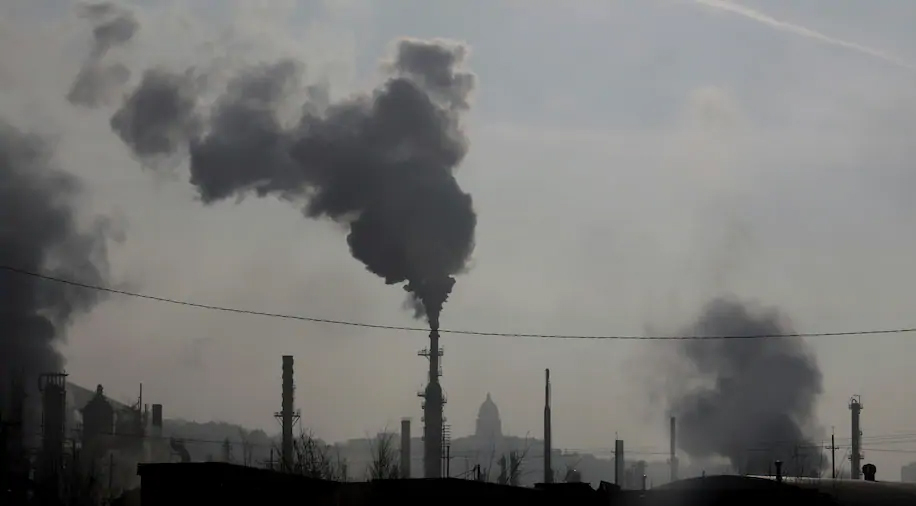A "border carbon adjustment" without a carbon tax?
By James E. Rauch | March 2021
UC San Diego, NBER, and CESifo
Should the U.S. impose a border carbon adjustment even though no formal carbon tax is in place? CCD affiliate Jim Rauch says yes, if new Biden Administration environmental regulations raise the implicit U.S. price of carbon significantly.
 The Biden Administration will implement many regulations to reduce greenhouse gas (GHG) emissions. This will lead to “leakage”: the regulations will raise costs for U.S. extractors and manufacturers, leading to imports from countries with less stringent regulations, and thereby dissipating the benefits for the environment. Moreover, U.S. workers will be disadvantaged relative to workers in these countries.
The Biden Administration will implement many regulations to reduce greenhouse gas (GHG) emissions. This will lead to “leakage”: the regulations will raise costs for U.S. extractors and manufacturers, leading to imports from countries with less stringent regulations, and thereby dissipating the benefits for the environment. Moreover, U.S. workers will be disadvantaged relative to workers in these countries.
The problem of leakage has received a great deal of scholarly attention in connection with a (hypothetical) unilateral carbon tax. The proposed solution is a “border carbon adjustment,” also known as a border tax adjustment (BTA), that would raise the costs of imports to the same level they would be if the foreign countries imposed the same carbon tax as the home country. There would also be an export rebate to offset the higher costs of home country exporters relative to producers in foreign countries.
Flannery et al. (2020) note that, “Rules of the World Trade Organization (WTO) allow nations to rebate value-added taxes (VATs) on exported products and impose them on imports.” That is, BTAs in the context of VATs are WTO-legal. Therefore, Flannery et al. propose BTAs for the United States in the context of an upstream GHG tax that is administered so as to mimic a VAT. By analogy, these BTAs should be WTO-legal.

Smokestacks near an oil refinery in front of the
Utah State Capitol in Salt Lake City. (Rick Bowmer/AP)
It is less straightforward to establish WTO-legality of BTAs in the context of regulations that effectively raise the price of carbon without an explicit GHG tax. One argument, based on Bagwell and Staiger (2001), is that by raising costs for U.S. producers the Biden Administration environmental regulations will unilaterally increase foreign access to the U.S. market, justifying BTAs to restore access to its former level. It may be possible to use environmental exceptions to the GATT (Article XX, paragraphs (b) and (g)) to buttress or substitute for this argument.
The environmental benefits of a border carbon adjustment are clear. There should be political benefits as well. A BTA should deflate the argument that the Biden Administration environmental regulations are disadvantaging U.S. workers. Insofar as Chinese production is especially carbon-intensive, the BTA offers the Biden Administration a legitimate way to be “tough on China,” not to mention giving the Chinese an incentive to reduce their reliance on coal-fired power plants.
Environmental and political benefits notwithstanding, Flannery et al. (2020) are skeptical of BTAs based on regulations. They write that, even if BTAs based on regulations were WTO-legal in principle, “they face significant methodological challenges to evaluate objectively an ‘equivalent cost’ to assign to BTAs for exports or imports.” In line with this skepticism, the Biden Administration’s 2021 Trade Policy Agenda only mentions border carbon adjustment once (on p. 16), in a purely hypothetical way. That is, seeing no prospects for a carbon tax, the 2021 Trade Policy Agenda does not waste space discussing BTAs.
Biden Administration environmental regulations will be based on a “social cost of carbon,” currently $51 per ton but expected to be increased in January 2022. If the regulations were in fact to raise the effective price of carbon to this social cost, then it would provide the “equivalent cost” that Flannery et al. are seeking.
Between now and January 2022, estimates of the impact of environmental regulations based on a $51 per ton social cost of carbon may come from several sources. Affected industries may document increases in their costs as part of their lobbying efforts against a higher social cost of carbon. The Biden Administration itself, independent think tanks, and academic economists may all estimate increases in the effective price of carbon in order to project the effects of adopting a higher social cost. This information can be used to establish presumptive BTAs when the new social cost of carbon is published in January 2022.
The Biden Administration could start with relatively high BTAs, and allow exporters to the U.S. to come forward with information about their actual emissions and obtain lower and more accurate BTAs. This approach would create an incentive for producers to provide the necessary information, reducing the need for U.S. tax administrators to discover the information themselves (Kortum and Weisbach 2017).
The combination of BTAs with environmental regulations based on a social cost of carbon is a coherent policy package implementable by the executive branch of the U.S. government. BTAs and an explicit GHG tax would be better, but the prospects of getting a GHG tax through Congress appear to be nil. With our climate in crisis, we cannot afford to let the best be the enemy of the good.
References
Bagwell, Kyle and Staiger, Robert W. 2001. “The WTO as a Mechanism for Securing Market Access Property Rights: Implications for Global Labor and Environmental Issues.” Journal of Economic Perspectives 15 (Summer): 69-88.
Flannery, Brian; Hillman, Jennifer A.; Mares, Jan; and Porterfield, Matthew C. 2020. “Framework Proposal for a US Upstream GHG Tax with WTO-Compliant Border Adjustments: 2020 Update.” https://www.rff.org/publications/reports/framework-proposal-us-upstream-ghg-tax-wto-compliant-border-adjustments-2020-update/
Kortum, Samuel and Weisbach, David. 2017. “The Design of Border Adjustments for Carbon Prices.” National Tax Journal 70(2): 421-446.
The writings on this page are not intended to reflect an official view of the Center for Commerce and Diplomacy (CCD) or the opinions of its leadership.
